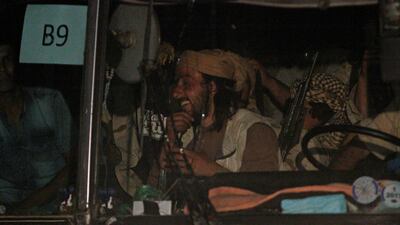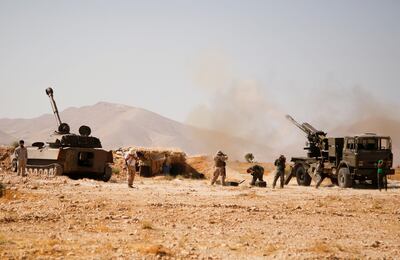A convoy of buses carrying ISIL fighters and their families has now been stranded in the Syrian Desert east of As Sukhna for seven days.
The buses became stranded after the United States-led coalition bombed roads between Al Sukhna and the city of Albu Kamal, the convoy’s destination, to prevent the ISIL fighters moving east.
The US said the Syrian regime was allowing the suffering of stranded women and children on the buses unnecessarily after it communicated a course of action to them via President Bashar al-Assad’s Russian allies, which would free non-fighters from the convoy.
“The Syrian regime is letting women and children suffer in the desert. This situation is completely on them,” said Lt Gen Stephen J Townsend, commander of the Combined Joint Task Force leading the US-led operation.
_______________
Read more:
ISIL convoy in Syria splits up under pressure from US military
Raqqa's Great Mosque fully retaken, says anti-ISIL coalition
_______________
Seventeen buses, carrying about 600 people, began crossing Syria last week after ISIL fighters surrendered to Hizbollah and Syrian government troops in an area near the Lebanon border.
The coalition and the Iraq government said it was not part of an agreement made by Hizbollah and the Syrian regime and therefore prevented the movement of ISIL fighters east, for fear they would move onto Iraqi soil.
In a statement, the coalition said it has allowed food and water deliveries to reach the stranded women and children, something which Hizbollah had accused the US of preventing.
On Sunday, the convoy split into two, with six of the 17 buses heading back westwards towards Palmyra, an area held by the Syrian regime and the remaining 11 staying near Al Sukhna.
It was not immediately clear why the convoy had split. Col Ryan Dillon, a spokesman for the US-led coalition fighting ISIL in Iraq and Syria, said both parts of the convoy were believed to hold a mix of fighters and civilians, and that for now, the US had stopped monitoring the part of the convoy that had moved south.
The surrender and negotiations followed eight days of fighting that trapped about 300 ISIL fighters between the Lebanese army and Hizbollah and Syrian government forces.
The negotiations led to the handing over of bodies of Hizbollah and Iranian fighters held by ISIL, as well as information about the location of the bodies of nine Lebanese soldiers who had been held by ISIL since 2014 and were presumably killed by the group. Those bodies have been exhumed by the Lebanese military and are undergoing DNA testing to verify their identities.
Hizbollah has criticised US interference in the deal.
“The US goal of blocking the convoy has no relation with confronting ISIL,” its media office said on Saturday, though it did not posit what the actual reason may have been.


